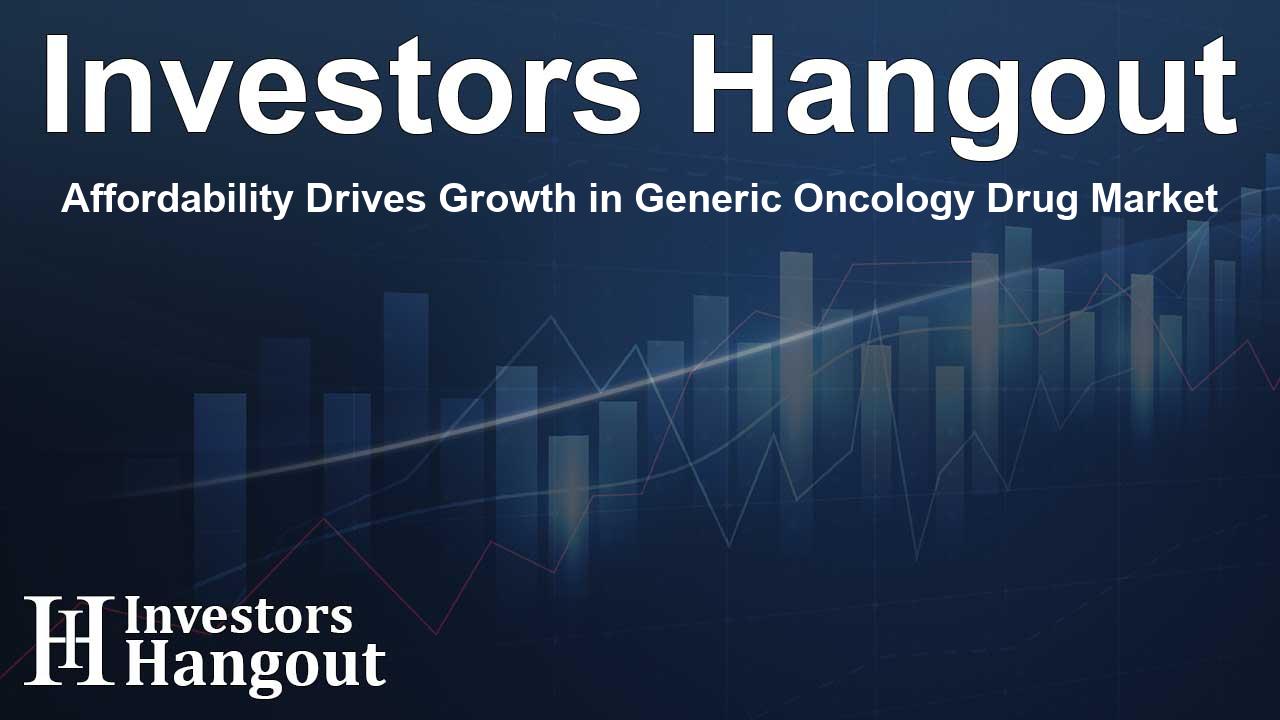Affordability Drives Growth in Generic Oncology Drug Market

Exploring the Growth of the Generic Oncology Drugs Market
The global generic oncology drugs market is on an impressive upward trajectory. With estimates indicating that this market may swell to approximately USD 30,998 million by 2034 from USD 23,748 million in 2024, the industry's growth is primarily fueled by the increasing demand for affordable cancer treatments. Coupled with rising cancer rates and an increasing number of therapies available as generics, the sector is experiencing substantial momentum.
Why Generic Oncology Drugs Matter
Generic oncology drugs play a crucial role in cancer treatment, particularly as many anticancer medications are now only available in generic forms. These medications are developed to match their brand-name counterparts in terms of administration methods, safety, effectiveness, and overall quality. The benefits of generic drugs include major cost savings, usually ranging from 50% to 90% less than branded drugs. In addition, the expiration of numerous drug patents and encouraging legislation regarding lifesaving medications are propelling market growth.
Market Overview
The market encompasses a diverse selection of therapies, including hormone therapies, immunotherapies, targeted therapies, and chemotherapy drugs. The advancements in these drug categories have been remarkable; innovative treatments are emerging for cancers that were once considered difficult to treat. This progress not only leads to reduced healthcare costs but also enhances the quality of life for patients undergoing treatment.
Key Highlights of the Market
As observed in recent analyses, several factors are pivotal in shaping the landscape of the generic oncology drugs market:
- North America currently holds the largest share of the global market.
- The Asia Pacific region is expected to experience the highest growth rate in coming years.
- The targeted therapy drugs segment was the dominant player within the market as of 2024.
- Immunotherapy drugs are predicted to see the most growth from 2025 to 2034.
- The breast cancer treatment segment leads in market share, while lung cancer treatments are showing notable growth potential.
- Injectables continue to top the list for routes of administration, with oral medications gaining traction.
- Hospital pharmacies are key players in drug distribution, with retail pharmacies on the rise.
Rising Demand for Innovation
According to recent statistics, there is a substantial need for innovative approaches to cancer care. For instance, personalized medicine has made significant strides, as it notably decreases damage to healthy cells and minimizes side effects. Personalized treatments, when matched with specific cancers, enhance the chances of successful outcomes. As governments increasingly endorse and support generics, a ripple effect of affordability and access is emerging.
Challenges and Opportunities
Nevertheless, challenges remain in the landscape of generic oncology drugs. For instance, the high costs associated with certain treatments can hinder adherence for many patients in need. Reports indicate that over 25% of patients encounter financial barriers when attempting to acquire prescription medications.
The Future of Generic Oncology Drug Platforms
Looking ahead, the evolution of generic oncology drug platforms appears promising. New developments focus on modalities designed specifically to target cancer cells, aiming for effective treatment across all stages of cancer. This vision is particularly relevant for men and women facing blood cancers, pancreatic cancer, and various other complex conditions.
Regional Dynamics of the Market
In particular, North America is positioned as a leader in this market segment, bolstered by ongoing technological advancements and an increase in healthcare expenditure. The region benefits from extensive cancer screening programs and a robust pipeline of innovative treatments. Looking at the broader picture, Asia Pacific's market is anticipated to expand dramatically due to several favorable factors, including government incentives and cost-efficient drug manufacturing.
Noteworthy Developments in Asia
In this landscape, key players such as India and Japan are becoming vital contributors. For instance, Indian pharmaceutical companies are significantly enhancing their manufacturing capabilities, leading to products that have received approval from regulatory agencies like the FDA. Meanwhile, Japanese firms are leveraging partnerships and research to drive innovations.
Frequently Asked Questions
What is the projected growth rate of the generic oncology drugs market?
The market is anticipated to grow at a CAGR of 2.7% from 2025 to 2034.
Which region dominates the generic oncology drugs market?
North America holds the largest share of the market as of 2024.
What are the major types of drugs in this market?
Key drug types include chemotherapy, targeted therapy, and immunotherapy drugs.
Why are generic oncology drugs crucial for patients?
They offer a cost-effective alternative to brand-name drugs while maintaining the same safety and efficacy standards.
What challenges does the market face?
High costs of medications can deter patients from adhering to treatment plans, which is a significant challenge in the sector.
About The Author
Contact Logan Wright privately here. Or send an email with ATTN: Logan Wright as the subject to contact@investorshangout.com.
About Investors Hangout
Investors Hangout is a leading online stock forum for financial discussion and learning, offering a wide range of free tools and resources. It draws in traders of all levels, who exchange market knowledge, investigate trading tactics, and keep an eye on industry developments in real time. Featuring financial articles, stock message boards, quotes, charts, company profiles, and live news updates. Through cooperative learning and a wealth of informational resources, it helps users from novices creating their first portfolios to experts honing their techniques. Join Investors Hangout today: https://investorshangout.com/
The content of this article is based on factual, publicly available information and does not represent legal, financial, or investment advice. Investors Hangout does not offer financial advice, and the author is not a licensed financial advisor. Consult a qualified advisor before making any financial or investment decisions based on this article. This article should not be considered advice to purchase, sell, or hold any securities or other investments. If any of the material provided here is inaccurate, please contact us for corrections.
